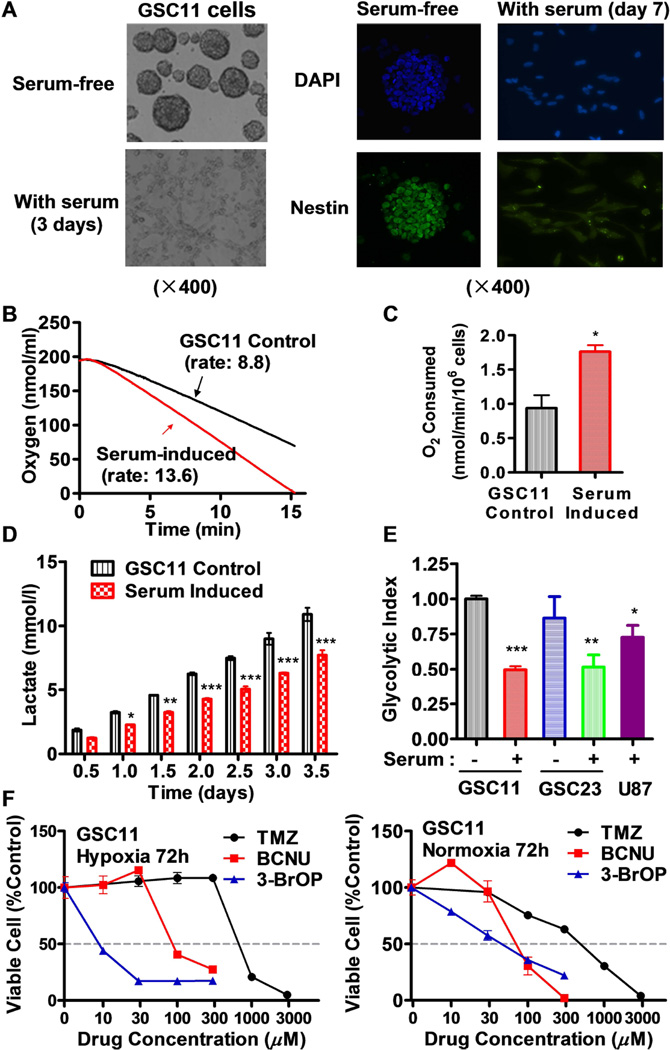Figure 1.
Low mitochondrial respiration and high glycolysis in glioblastoma stem cells (GSCs) and their resistance to standard chemotherapeutic agents TMZ and BCNU. (A) Loss of neurosphere formation and decrease in expression of neural stem cell marker nestin in GSC11 cells after exposure to serum (10% FBS) for the indicated time. (B) Representative of mitochondrial respiration rates in GSC11 cells cultured in stem cells medium and in serum-containing medium. Oxygen consumption was measured as an indicator of mitochondrial respiration. (C) Quantitative comparison of mitochondrial respiration rates in GSC11 cells cultured in stem cells medium and in serum-containing medium. (D) Lactate generation rates in GSC11 cells maintained in stem cell medium or in serum-containing medium. (E) Comparison of glycolytic index in GSC11, serum-induced GSC11, GSC23, serum-induced GSC23 and glioblastoma cell line (U87). Glycolytic index was calculated according to the formula (L × G)/O), in which L is the cellular lactate production, G is the glucose uptake, and O is the oxygen consumption rate. (F) Sensitivity of glioblastoma stem cells to TMZ, BCNU, and 3-BrOP under hypoxic and normoxic conditions. GSC11 cells were incubated with the indicated concentrations of drugs for 72 h in normoxia or hypoxia (2% O2) conditions, and cell viability was measured by MTS assay. *, p<0.05; **, p<0.01; ***, p<0.001.

